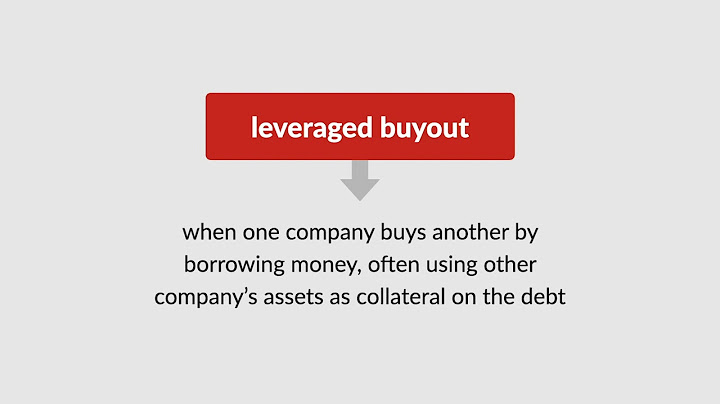Although AARP bills itself as a nonprofit senior advocacy group, its life insurance for seniors is subpar. Show
Learn how their policies work, the pros & cons, how much it costs and if their coverage is worth buying. Topics Covered in this article
New York Life AARP Life Insurance ProgramAARP is not a life insurance company. They partnered with New York Life Insurance Company to offer their members life coverage. Tip: You must be an AARP member to apply. AARP life insurance policies vary in type. They have term, permanent, and guaranteed acceptance life insurance. None of their policies require a medical exam, but eligibility for some of their plans depends on your health. You can see instant life insurance quotes for all their policies directly on their website. You can apply online, through the mail, or by calling and speaking with a licensed insurance agent. Pros & Cons Of AARP Life InsuranceNo product from any company is entirely good or bad. Life insurance from AARP has some strong and weak points, all of which are outlined below. The good
The bad
Should You Buy AARP Life Insurance For Seniors?AARP coverage is generally not the best option for most seniors. First, they are almost always more expensive than other insurance providers. Additionally, their underwriting is not very favorable to seniors. They regularly offer applicants policies with a two-year waiting period and a higher price for common medical conditions prevalent among seniors. If you need life insurance for a senior, you can likely get lower prices and no waiting period coverage from many other life insurance companies. Use the quote tool on this page to compare AARP’s rates against multiple other providers. AARP Level Benefit Term Life InsuranceThe primary life insurance policy promoted through the AARP life insurance program is a term life plan that lasts until age 80. On your 80th birthday, the policy terminates, and you’re no longer insured. Tip: If you outlive the policy, you do not get your money back once you turn 80. Additionally, the monthly premium will increase every five years. They call it a “level death benefit” because the life insurance coverage will never decrease in value. If you die while the policy is in force, your beneficiaries will get the full death benefit in the form of a tax-free check. There are no restrictions of any kind regarding how they spend the money. The policy is convertible. At any point, policyholders can call AARP and convert from term life to whole life. If you convert to whole life, they will price it according to however old you are when you initiate the conversion (expect a massive price increase).
AARP Guaranteed AcceptanceThe AARP guaranteed issue whole life policy has no health questions or underwriting of any kind. You are guaranteed approval regardless of pre-existing conditions. The main drawback that you must be aware of is the waiting period. If you die in the first 24 months, New York Life will only refund 110% of your premium payments. You must live for more than two years before the full death benefit is payable.
AARP Whole Life Insurance (Permanent Life)AARP members can opt for a permanent coverage whole life policy that requires you to answer health questions. It’s a no waiting period permanent life insurance policy. So if you’re approved, you’re 100% covered for all causes of death (except suicide) the day you make your first payment.
AARP Final Expense InsuranceAARP regularly promotes ads to people looking for final expense insurance. For context, final expense insurance (aka burial or funeral insurance) is just a marketing expression. A funeral expense policy is just a small life insurance plan to cover the cost of a cremation or burial. Technically, it can be term life or whole life. AARP burial insurance is usually their term life insurance. They likely offer their term life because it’s less expensive than whole life, and they’re hoping seniors won’t realize that the policy expires at 80. Essentially, they’re hoping the lower premium is so attractive that nobody will stop to ask why it’s cheaper. For senior final expense needs, we strongly advise you to seek out a whole life policy to have lifetime coverage. With whole life, you can have guaranteed peace of mind and know that your funeral expenses won’t burden your loved ones. AARP also has whole life insurance, but it’s much more expensive than other insurance providers like Mutual of Omaha and many others. How Much Does AARP Life Insurance Cost?The cost of AARP life insurance varies greatly because they offer different policy types. A healthy nonsmoking 65-year-old male seeking $25,000 in coverage will pay a monthly rate of $67 for term, $158 for permanent whole life, and $225 for guaranteed acceptance. The exact cost of final expense insurance (or any type) depends on your age, health, coverage amount, and which type of policy you buy (term or whole life). AARP term life ratesRemember, AARP term life insurance rates increase every time you enter a new age bracket. 74 is the oldest age they’ll issue a new term policy on someone. Then once you turn 80, the policy terminates, leaving you with no insurance.
AARP guaranteed acceptance ratesThe rate is the same whether you smoke or not since there are no health questions for a guaranteed acceptance policy. Also, your actual age determines your premium. The sample prices below are only for these precise ages.
AARP whole life ratesAs you look at the whole life rate chart below, remember that the price for AARP whole life insurance is based on your exact age. For example, a 55-year-old will pay a slightly higher premium than someone who is 54.
AARP Complaints And 3rd Party RatingsFrom a financial stability perspective, this is one area where AARP shines bright. New York Life is the insurance company that underwrites AARP life policies. They have some of the highest financial strength ratings possible. They have an A++ rating with A.M Best (the highest possible rating), AAA with Fitch Ratings, Aaa with Moody’s, and AA+ with Standard and Poor’s. The bottom line is that New York Life isn’t going anywhere, and they have the means to pay their claims. There’s positive and negative customer feedback about AARP’s life insurance program. For example, there are an exceptionally high number of negative reviews on the website consumeraffairs.com. On the flip side, New York Life’s complaint ratio with the National Association of Insurance Commissioners (NAIC) for group life was .93 in 2021, which is a good score. The 2021 J.D. Power life insurance study ranked them 9 out of 21 with a score of 777, which is above the average (776). Company BackgroundAARP was started in 1958 by Ethel Percy Andrus and Leonard Davis. It was started as a nonprofit interest group focused on senior-related issues. Leonard later created Colonial Penn Life Insurance Company which is famous for featuring Alex Trebek promoting their $9.95 plan on TV. AARP heavily lobbies the government to advance issues that affect seniors. In addition, they sell paid memberships, granting them access to various discounts and benefits, including insurance products. At present, AARP markets life, pet, health, home, auto, long-term care, and many other types of insurance. Frequently Asked QuestionsThe cost of AARP life insurance depends on which policy you buy, your age, health, and how much coverage you buy. For example, $10,000 costs a 65-year-old female $31.00 per month for term, $66.00 for whole life, and $91.00 for guaranteed acceptance. AARP has a level benefit term life with a five-year increasing premium, whole life, and guaranteed acceptance whole life. None of their policies require a medical exam. AARP’s term life policy ends on your 80th birthday. They also have two types of whole life insurance, both of which last forever. AARP used to offer a young start program that was a whole life policy for children under 18. However, it has been discontinued and is no longer available. Now, AARP only offers life insurance to adults. How much does AARP life insurance cost?AARP level benefit term life insurance. What type of life insurance is best for a 60 year old?What type of life insurance is best for a 60-year-old? Term life insurance is the cheapest and best option for most life insurance buyers who need coverage for a specific financial challenge, such as covering a mortgage or providing for a loved one.
What kind of life insurance does AARP have?The AARP program features permanent and term life insurance with simplified underwriting, which means applicants answer health questions but do not have to undergo a medical exam to qualify. The program also offers whole life insurance with guaranteed acceptance for everyone.
At what age does AARP life insurance go up?AARP term life insurance rates increase every five years. If you sign up at 50 years old, your rates will increase when you turn 55.
|

Related Posts
Advertising
LATEST NEWS
Advertising
Populer
Advertising
About

Copyright © 2024 toptenid.com Inc.


















